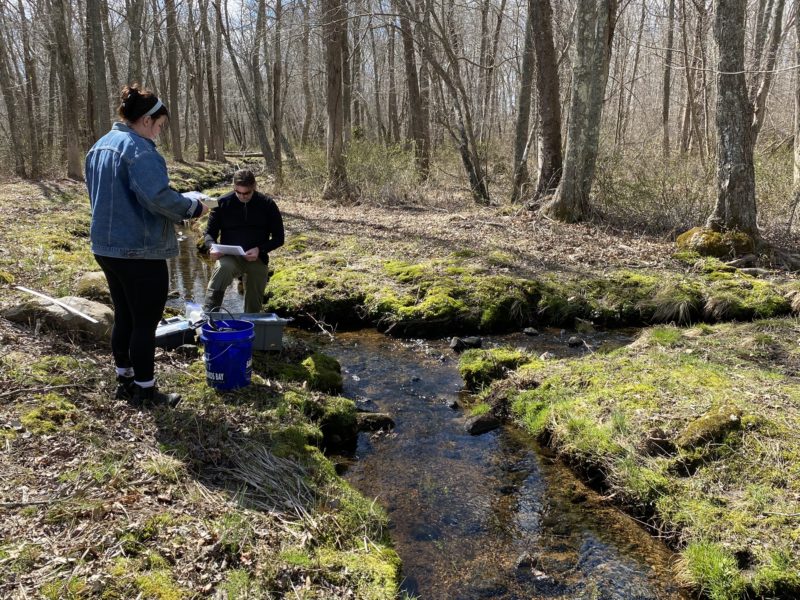The Buttonwood-to-Bay Project: A New Season for Local Water Quality
Spring is a time of renewal, and with the weather gradually warming up, it’s a great time to start planning for bold summer projects. This month the Buzzards Bay Coalition is excited to put some of that planning into action by kicking off our first few rounds of water sampling as a part of the Buttonwood-to-Bay Project.
Water quality and structural issues in Buttonwood Brook and Apponagansett Bay have serious implications for local communities that affect public health, climate adaptation, and important economic drivers like tourism and local fisheries. Water sampling in the brook is one component of the Buttonwood-to-Bay project and contributes to a broader scientific foundation that will ultimately guide the restoration of Buttonwood Brook and Apponagansett Bay.
However, long before our first sampling bottles were dipped, the Coalition spent months working with local scientists, water resource experts, and representatives from the EPA and MassDEP to formulate comprehensive plans called QAPPs that standardize how we gather and analyze water quality data.

Buzzards Bay Coalition staff take water samples from Buttonwood Brook
What’s a QAPP?
QAPPs are like strategic plans that cover the life of a project and outline systematic approaches for monitoring and research activities. QAPPs provide benchmarks for the procedures we’ll use to collect, handle, and analyze water samples in the lab. And as their name suggests, they also define how we perform and report quality assurance at every step in the process. When completed, QAPPs are submitted to regional EPA and MassDEP offices where they undergo detailed review and approval by environmental scientists and regulators. This stringent process ensures valid scientific methods are used and lends strong credibility to the project.
Happening Now
BBC staff are currently collecting samples bi-weekly for bacteria and nutrients at carefully selected sites up and down the brook. This focused effort will continue for the next 12 months and is being augmented by the placement of several sensors that will track changing water levels in the brook related to local rain events. Alongside the water testing, BBC staff and volunteers from the local community are in the field conducting ground truth assessments of the brook and adjacent habitats. These assessments use protocols developed by the USDA and EPA to document the physical condition of the brook, root out potential pollution sources, and identify manmade obstructions to flow. To date, seven stream walks have been completed covering over eight miles of the brook and its feeder tributaries.
Great Partners = Great Science
To ensure all this research supports clear decisive action, the Buzzards Bay Coalition has partnered with some of the world’s leading water and climate scientists. Institutions like the Woods Hole Oceanographic Institution, Woodwell Climate Research Center, Marine Biological Lab, and the Buzzards Bay National Estuary Program bring deep expertise and vast experience to our local water quality issues.
Collectively we share the belief that there is no shortcut to the truth; only through patient and methodical inquiry will we fully understand the complex issues impacting our local waters. Together with our outstanding science partners, we are excited to dig in and begin building the scientific foundation that will guide successful restoration efforts and help preserve these vital natural resources for generations to come.